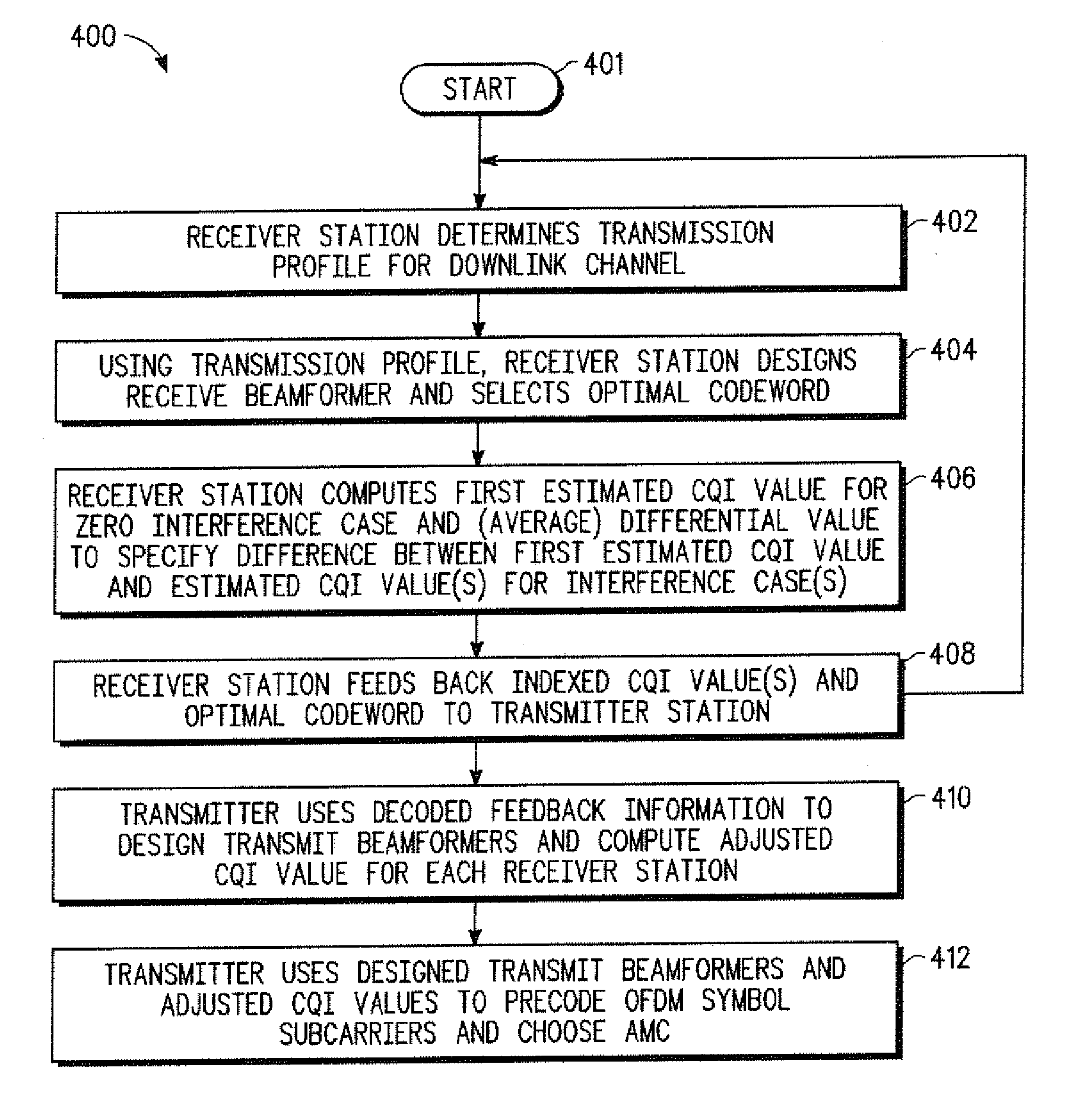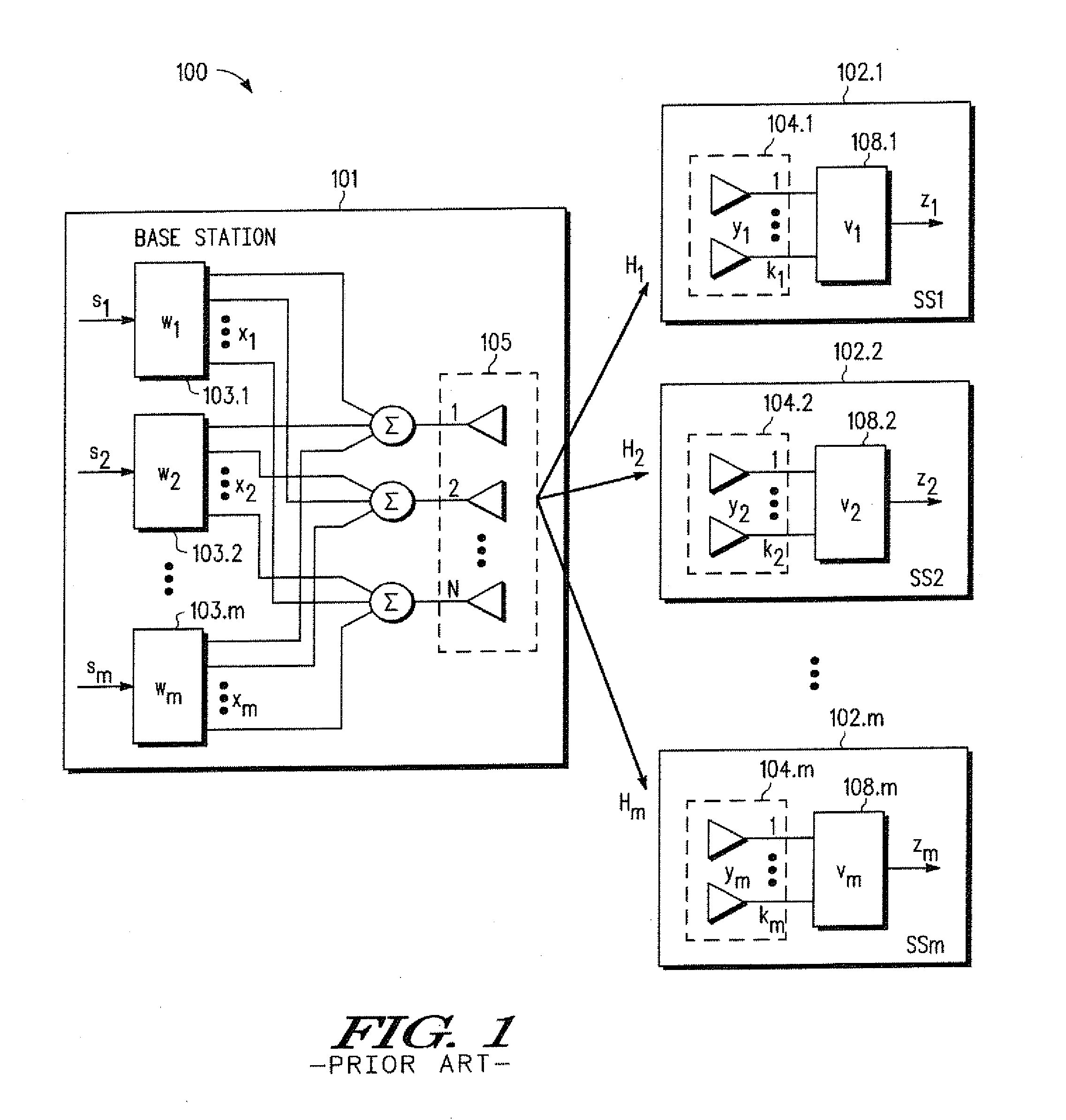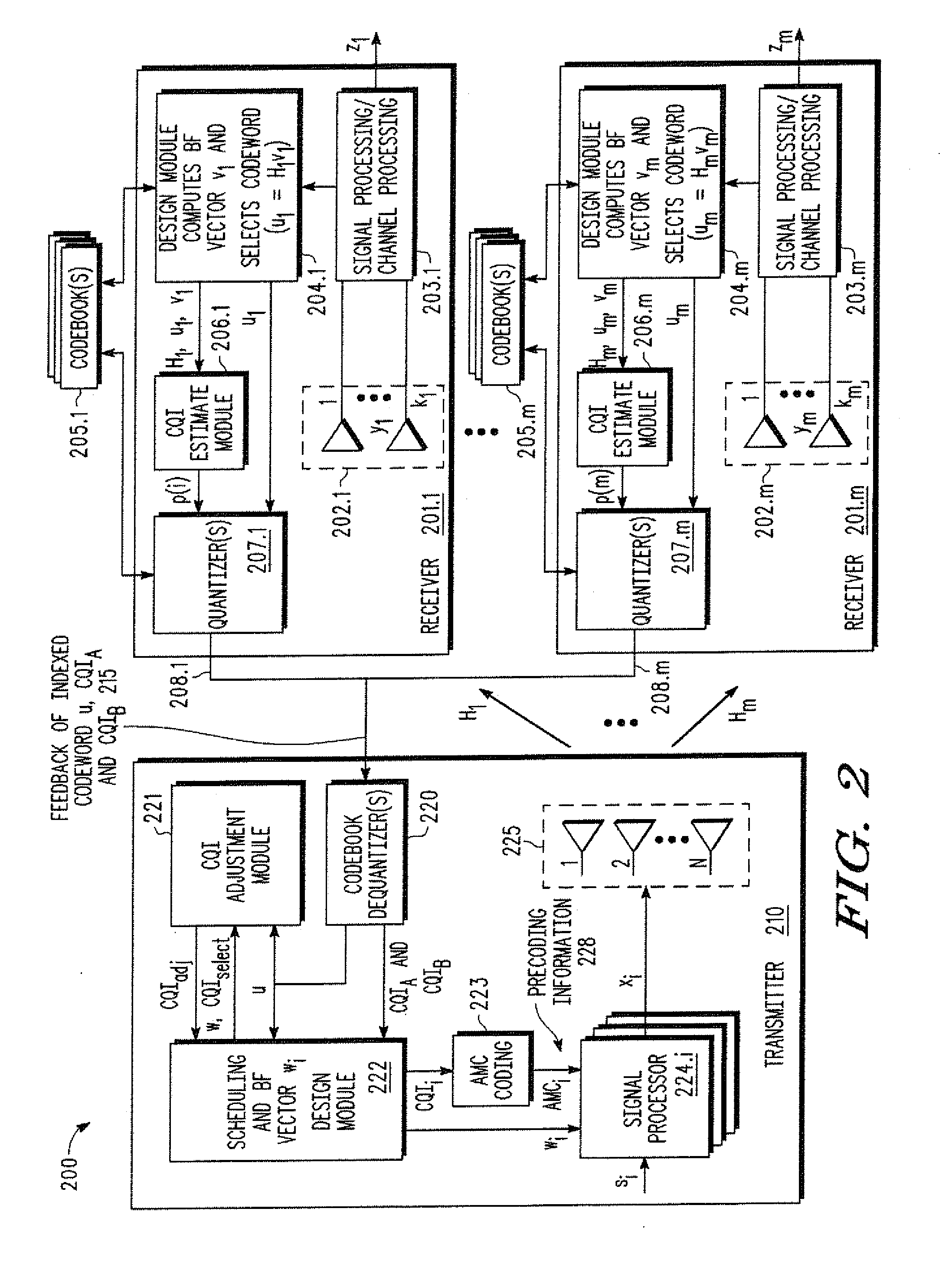Multi-user mimo-sdma for finite rate feedback systems
a feedback system and multi-user technology, applied in the field of information processing, can solve the problems of increasing the challenge of improving spectrum usage efficiency, difficult to accurately measure the channel information or associated channel characteristics, and limited electromagnetic frequency spectrum capacity
- Summary
- Abstract
- Description
- Claims
- Application Information
AI Technical Summary
Benefits of technology
Problems solved by technology
Method used
Image
Examples
Embodiment Construction
[0020]A finite rate feedback system and methodology are described for use in efficiently providing precoder feedback in wireless, multi-user, multi-input, multiple output (MIMO) SDMA systems. Using codebook-based precoding techniques, multi-user beamforming transmission is enabled by accurately estimating and adjusting one or more CQI values for each receiver based upon the optimized receive beamforming vector designed at each receiver. In various example embodiments, a receiver estimates the CQI value(s) by jointly designing a receive beamforming vector v and selecting a corresponding codeword u=Hv which are optimized to correspond to the MIMO channel between the transmitter and the receiver. The receive beamforming vector v and corresponding codeword u may be optimized by maximizing a predetermined metric ρ for estimating the signal-to-interference-and-noise (SINR) or other CQI information detected at the receiver in a multi-user setting without any knowledge of the other users or...
PUM
 Login to View More
Login to View More Abstract
Description
Claims
Application Information
 Login to View More
Login to View More - R&D
- Intellectual Property
- Life Sciences
- Materials
- Tech Scout
- Unparalleled Data Quality
- Higher Quality Content
- 60% Fewer Hallucinations
Browse by: Latest US Patents, China's latest patents, Technical Efficacy Thesaurus, Application Domain, Technology Topic, Popular Technical Reports.
© 2025 PatSnap. All rights reserved.Legal|Privacy policy|Modern Slavery Act Transparency Statement|Sitemap|About US| Contact US: help@patsnap.com



